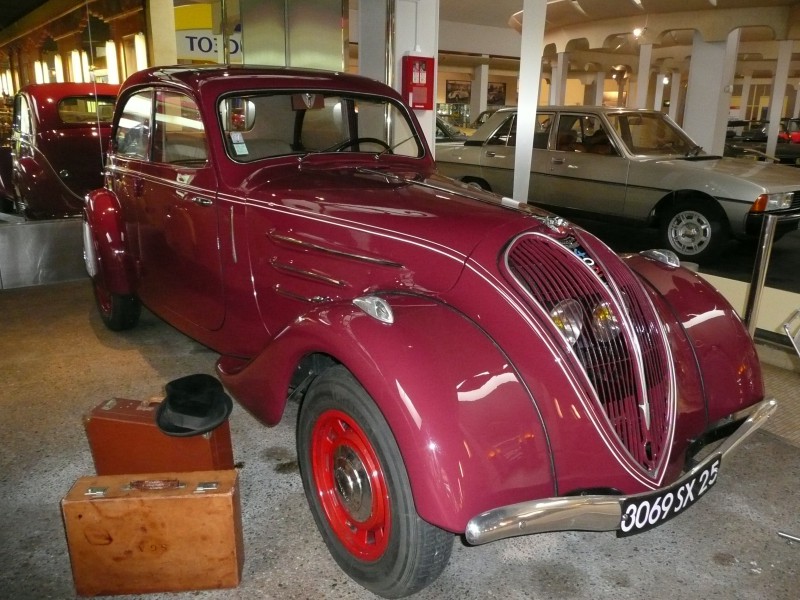With the forecast for a day of almost non-stop and heavy rain across a swathe of central Europe, including the whole of Switzerland this past Sunday, I decided to seek refuge and entertainment in an indoor venue. The chosen location was a return visit to the small French town of Sochaux, and the wonderful “Aventure Peugeot” museum. It is 10 months since my last visit, and I was expecting that perhaps a few exhibits would be different, but what I actually found was virtually the entire museum contents had been moved around, and many different cars were on display. So, I make no apologies for a second report on this rather diverting venue.
As has been documented previously, the Freres Peugeot started out their business in a mill and forge in the town of Sochaux, and made an early name for metal work. As the bicycle gained in popularity, so their business diversified to include this new item. There was a substantial display of Peugeot bikes from through the ages.
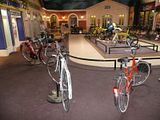 Elsewhere in the museum, some of the other products were also on show. These range from items such as pepper grinders to a range of sewing machines.
Elsewhere in the museum, some of the other products were also on show. These range from items such as pepper grinders to a range of sewing machines.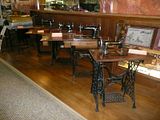 Motorcycles have also long featured in the Peugeot range.
Motorcycles have also long featured in the Peugeot range.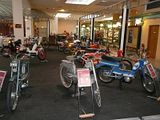 Peugeot were one of the pioneers of the motor car, and here is an early transition effort, dating from 1894.
Peugeot were one of the pioneers of the motor car, and here is an early transition effort, dating from 1894.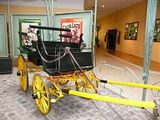 Some early cars:
Some early cars: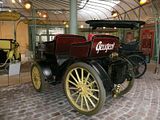
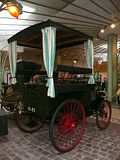
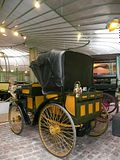
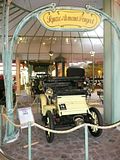
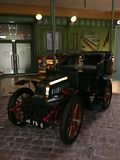
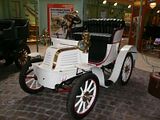
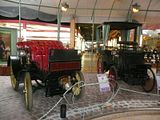
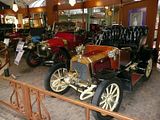
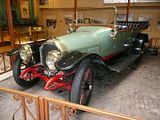
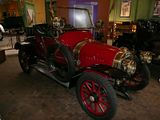
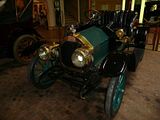
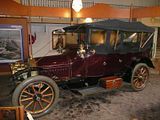
 In 1913, the famous “Bebe” Peugeot was launched. Unlike many of the micro-cars that were appearing all over France, this really was a miniaturised version of a real car.
In 1913, the famous “Bebe” Peugeot was launched. Unlike many of the micro-cars that were appearing all over France, this really was a miniaturised version of a real car.
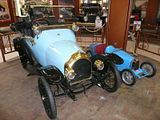 After this, more small cars appeared, including these two:
After this, more small cars appeared, including these two: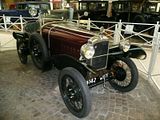
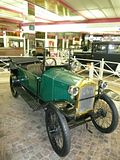 Once they started making cars, each model had the type number incremented by one. New models followed thick and fast, so quickly they were into three digits, especially as the range diversified.
Once they started making cars, each model had the type number incremented by one. New models followed thick and fast, so quickly they were into three digits, especially as the range diversified.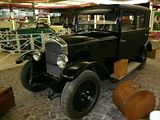
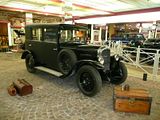
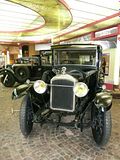
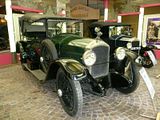
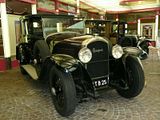
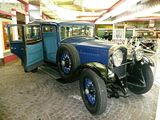 Type 172 Quadrilette: Depicted in the recreation of a typical repair shop of its day……..
Type 172 Quadrilette: Depicted in the recreation of a typical repair shop of its day……..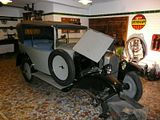 Type 183: Popular as a Taxi, this was a particularly roomy car, launched in 1928.
Type 183: Popular as a Taxi, this was a particularly roomy car, launched in 1928.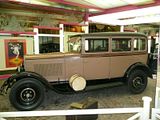 Type 184: This splendid vehicle was the star exhibit at Retro-mobile earlier in the year, so it was good to see it again, and to imagine just how special the occupants would have felt when being conveyed by this motor-car!
Type 184: This splendid vehicle was the star exhibit at Retro-mobile earlier in the year, so it was good to see it again, and to imagine just how special the occupants would have felt when being conveyed by this motor-car!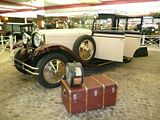
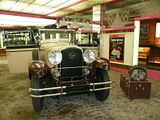
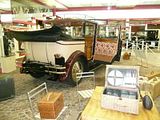 Type 190
Type 190
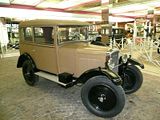
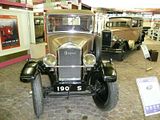 The first car with the now famous numbering system of a three digit number with a “0” in the middle was the 201 model launched in 1929. Three of these cars were on show: 201 Berline
The first car with the now famous numbering system of a three digit number with a “0” in the middle was the 201 model launched in 1929. Three of these cars were on show: 201 Berline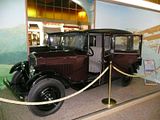 201 Cabriolet
201 Cabriolet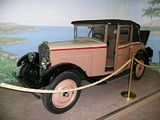 201 Coupe
201 Coupe 301 Berline
301 Berline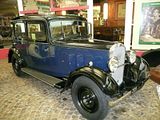
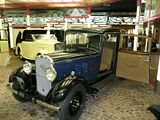
 301D Coupe
301D Coupe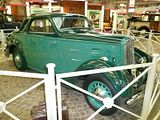 The 601 was the luxury model in the range in the 1930s. Very elegant indeed, aimed at the bourgeoisie, of course.
The 601 was the luxury model in the range in the 1930s. Very elegant indeed, aimed at the bourgeoisie, of course.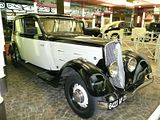

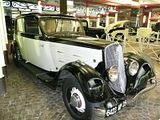
 For the second generation of “0” models, which started with the 402, launched in 1936, the aerodynamic look was adopted:
For the second generation of “0” models, which started with the 402, launched in 1936, the aerodynamic look was adopted: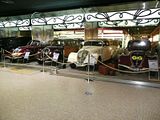 Peugeot also took the invention of the fully retractable metal roof and productionised it, with the name “Eclipse”, on their 402 model. Who said the CC was an invention of the 1990s?
Peugeot also took the invention of the fully retractable metal roof and productionised it, with the name “Eclipse”, on their 402 model. Who said the CC was an invention of the 1990s?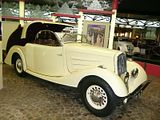
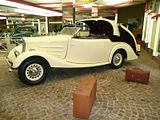 There was a regular 402 model, as well, and here it is
There was a regular 402 model, as well, and here it is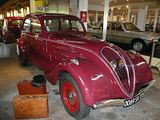
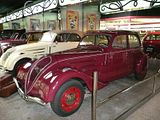 The 302 model followed in 1937
The 302 model followed in 1937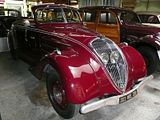 The 202, smallest car in the range arrived in 1938. This is an estate version.
The 202, smallest car in the range arrived in 1938. This is an estate version. 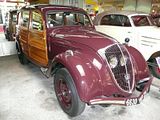 The first new design after the war was the 203, and this became Peugeot’s only model.
The first new design after the war was the 203, and this became Peugeot’s only model. 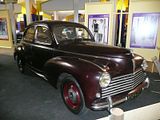

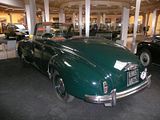 This 203 coupe was only produced for 2 years, and is very rare indeed.
This 203 coupe was only produced for 2 years, and is very rare indeed.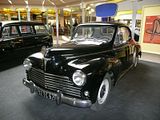
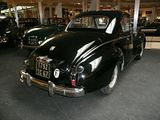 The 403 range developed with the addition of a Break and a Cabriolet. This latter was typically finished in bright colours, such as the red of the display car. A novelty for cars at this time!
The 403 range developed with the addition of a Break and a Cabriolet. This latter was typically finished in bright colours, such as the red of the display car. A novelty for cars at this time!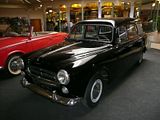
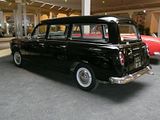
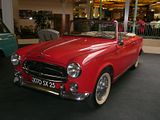
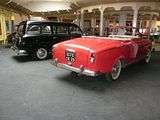
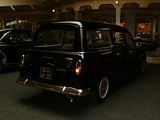
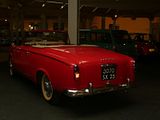 The first of the “4” models was launched in 1960, the 404. Styled by Pininfarina, this car looked not unlike the BMC Cambridge/Oxford cars and the Fiat 1800/2100. The Berline (saloon) was quickly followed by a particularly commodious Break (estate), and then more powerful versions with Kugelfischer mechanical fuel injection were offered.
The first of the “4” models was launched in 1960, the 404. Styled by Pininfarina, this car looked not unlike the BMC Cambridge/Oxford cars and the Fiat 1800/2100. The Berline (saloon) was quickly followed by a particularly commodious Break (estate), and then more powerful versions with Kugelfischer mechanical fuel injection were offered.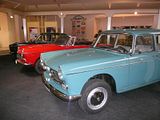
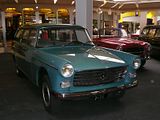 The 404 Cabriolet was designed and built in Torino……….. an expensive car in its day, but supremely elegant then. And now.
The 404 Cabriolet was designed and built in Torino……….. an expensive car in its day, but supremely elegant then. And now.
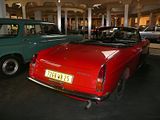
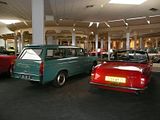 The 204 broke new ground for Peugeot in 1965. It was their first front wheel drive car, and the first with an all alloy engine
The 204 broke new ground for Peugeot in 1965. It was their first front wheel drive car, and the first with an all alloy engine
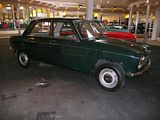
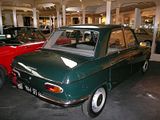 Soon an attractive Coupe and Convertible models were added to the range.
Soon an attractive Coupe and Convertible models were added to the range.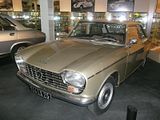
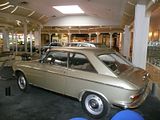 The 1969 model 304 was based heavily on the 204, but with a 1300cc engine, and revised bodywork.
The 1969 model 304 was based heavily on the 204, but with a 1300cc engine, and revised bodywork.
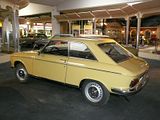
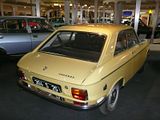 Voted Car of the Year in 1968, and a huge success for Peugeot for many years was the 504. Vast numbers of these cars still occupy the roads of Africa, where they simply refuse to wear out and expire.
Voted Car of the Year in 1968, and a huge success for Peugeot for many years was the 504. Vast numbers of these cars still occupy the roads of Africa, where they simply refuse to wear out and expire.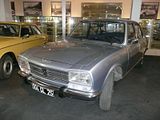

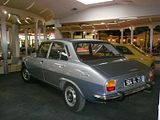
 Pininfarina was once again called upon to style the Coupe and the Cabriolet versions of these cars, which sold in small numbers due to their relatively high prices. Nowadays they are treasured by their owners, and who can blame them?
Pininfarina was once again called upon to style the Coupe and the Cabriolet versions of these cars, which sold in small numbers due to their relatively high prices. Nowadays they are treasured by their owners, and who can blame them?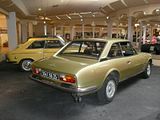
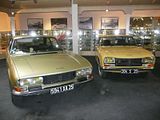
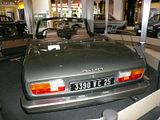 When launched in 1972, the 104 was billed as the shortest production 4 door car ever made.
When launched in 1972, the 104 was billed as the shortest production 4 door car ever made.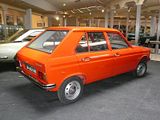 An even shorter version, the 104Z followed soon after. This 1979 model is of the very rare 104 Z2, of which less than 1000 examples were built.
An even shorter version, the 104Z followed soon after. This 1979 model is of the very rare 104 Z2, of which less than 1000 examples were built.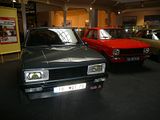
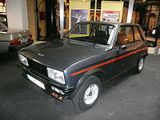
 The most recent road car in the display remains the 604 range. This GTi version was a 1985 model from the last year of production.
The most recent road car in the display remains the 604 range. This GTi version was a 1985 model from the last year of production.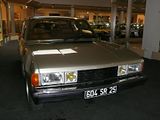
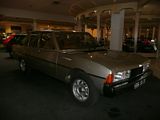
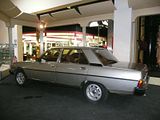 Peugeot has a long and distinguished history in motor sport, and a wide range of cars from racing and rallying were to be seen:301:
Peugeot has a long and distinguished history in motor sport, and a wide range of cars from racing and rallying were to be seen:301: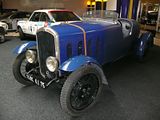 404 Record Holder
404 Record Holder
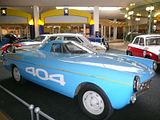 504 – successful especially in Africa until 1976:
504 – successful especially in Africa until 1976: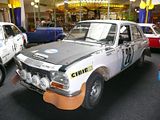
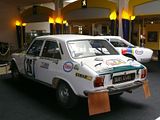 504 Coupe took over from the saloon version in 1976
504 Coupe took over from the saloon version in 1976 304
304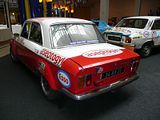 205 T16
205 T16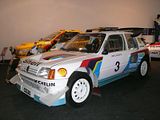
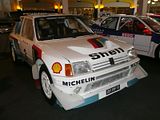 405
405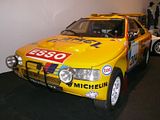 306
306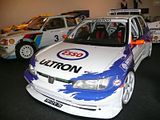
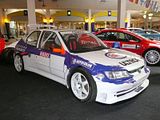 206
206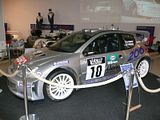 307 WRC
307 WRC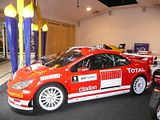 This DB car dates from 1967:
This DB car dates from 1967: The 905
The 905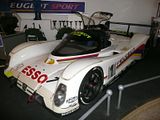 The 908
The 908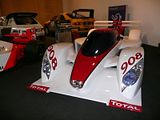 1994 McLaren-Peugeot Formula 1 car:
1994 McLaren-Peugeot Formula 1 car: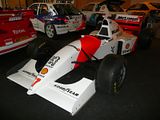 So, another fascinating visit, and a great way to escape the sheets of rain that seemed to continue falling out of the sky for most of the day!
So, another fascinating visit, and a great way to escape the sheets of rain that seemed to continue falling out of the sky for most of the day!2010-01-05 20:29:05














































































































